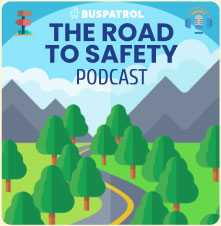As back-to-school season begins, school buses will be back on the road — and that means drivers need to stay alert and informed. While school bus stop-arm rules can vary by state, there are a few common-sense practices every driver should follow to help keep children safe.
First, slow down and be prepared for the school bus to stop. Above all, understand that the sole purpose of a school bus is to transport precious cargo, our children.
It’s also important to know that school bus stop sign rules aren’t just guidelines — they’re laws. These laws exist to protect students, and violating them can have serious consequences. BusPatrol’s mission is to change driver behavior and build greater awareness around school bus safety.
A great place to start is understanding the basics. Here are four key features of school bus stopping laws that help drivers make the right decisions behind the wheel.
School Bus Stop-Arm Rules for Amber or Yellow Lights on Buses
You probably see school buses on the roads daily. When the amber lights are flashing, the bus driver is signaling that the bus will soon come to a complete stop to let students on or off.
School Bus Stop-Arm Rules for Red Lights on Buses
Drivers must stop if the school bus’s red lights are flashing. Drivers tend to impulsively speed up in an attempt to pass school buses before the arm is fully extended. This is a mistake. While the red lights are flashing, drivers need to bring the vehicle to a complete stop behind the school bus. Drivers who speed past a school bus will not avoid a ticket.
Understanding the Stop-Arm: When and Why to Stop
Police actively seek out stop-arm violators. Drivers break the law if they do not stop immediately. It’s similar to driving through a red stop-light in a school zone. The stop-arm is a symbol of trust to the child crossing. Therefore, drivers who ignore the stop-arm violate that trust and endanger children. As a result, cars traveling in both directions must stop. Furthermore, the number of traffic lanes is irrelevant. All traffic must stop for the school bus.
What to Do When There’s a Median
Sometimes there is a median or physical barrier separating two lanes of traffic in opposing directions. Traffic on the opposite side of the road may be permitted to continue depending on the law in your state.
The Real Cost of Ignoring School Bus Stop Sign Rules
Finally, the human cost is most important. Every time a driver violates the stop-arm, he or she is putting a child at risk. Every year, children die from stop-arm violations. Illegally passing a stopped school bus equipped with a stop-arm camera typically results in a civil penalty of $250 to $300, depending on state law. If witnessed by law enforcement, the violation may carry a steeper penalty, including points on your license or higher fines.


